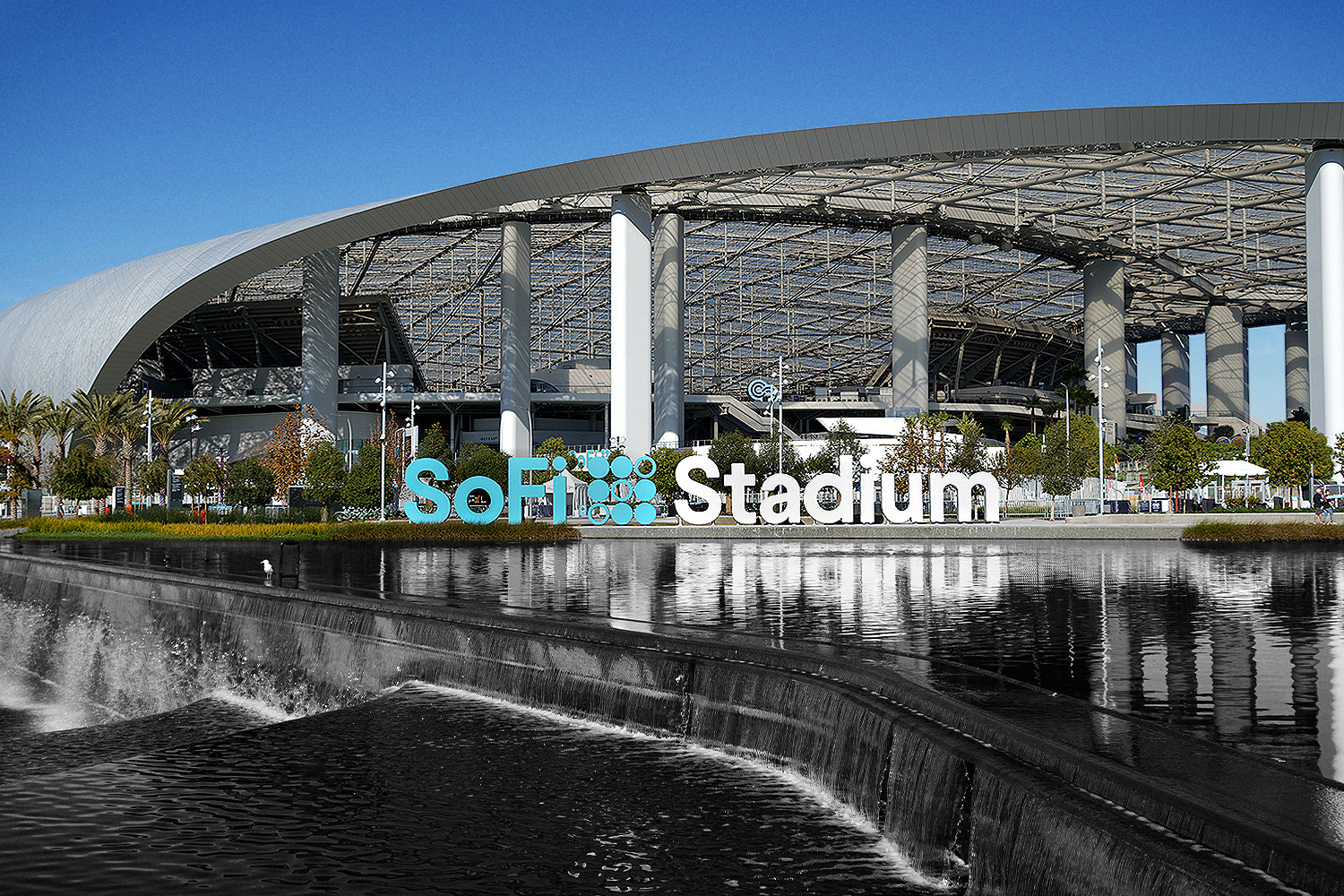© The Fan Experience Company 2020

SoFi Stadium: 6 Things You Didn't Know That Make This Super Bowl Stadium Different
Building a $5 billion football stadium outside Los Angeles means more than designing for a regular-season NFL game. Everyone knows the Inglewood venue will host international events, from the 2028 Summer Olympics to the 2023 College Football championship and potentially the 2026 World Cup. But global eyes will first take in the 2020-opened SoFi Stadum on Feb. 13 for Super Bowl LVI.
SoFi Stadium, though, was built for the show.
Dallas-based architecture firm HKS knew that going into the design of the 70,000-capacity SoFi Stadium, the building’s owner, Stan Kroenke, had grand visions. Mark Williams, HKS principal and sports practice director, says that made a few elements non-negotiable, such as a minimum capacity, ample plaza spaces to boost Super Bowl capacity toward 100,000 and an exterior design to move fans more fluently through security while creating space for additional fan experiences.
“I just feel like what we did there, what Mr. Kroenke did there, is really tuned and built for major events,” Williams says. “The way the building functions, the technology overlay, the spaces people can utilize pregame and postgame, the open concourses, the performance venue, the site, all of that being leveraged will expand the definition of someone going to the Super Bowl.”
With the Super Bowl experience built into the SoFi Stadium design, Williams points out six things you may not have known that makes this Super Bowl venue different from others:
The site’s more than a stadium
Located on the former grounds of 298-acre Hollywood Park Racetrack, the site now features a 70,000-seat NFL stadium, a 6,000-seat YouTube Theater and 2.5-acre American Airlines Plaza, along with a network of green space that features a six-acre lake and 12-acre Lake Park. The site, 3.5 times the size of Disneyland, has already welcomed back wildlife that hasn’t been seen in the area for 20 years. Along with the lake and bioswales on site, the stadium’s roof and underground cisterns collect and store rainwater for 100% of the site’s irrigation needs.
Dipping 100 feet into the ground
Due to FAA height restrictions with the stadium three miles from LAX, the field dips about 100 feet below grade, about double the depth of any other NFL venue. Designers studied cliffside architecture and created “canyons,” or paths, from grade to the lower bowl. “These meandering paths through outdoor lounges to get down to the lower part of the bowl, they are a very unique feature,” Williams says. “They grew out of the heigh restrictions, and I wonder if fans really realize that.” These terraced pathways, gardens and patios located throughout the project peel back the earth on all sides and fill the site with landscaping that bleeds into the building and gives the feeling of trekking down bluffs to a California beach.
A world’s first two-sided videoboard
The two-sided centerhung videoboard is just gigantic. About 120-yards-long and 2.2-million-pounds gigantic. While SoFi Stadium boasts one of the lightest structural roofs in the NFL it still hangs the largest centerhung videoboard in the world, a two-sided oculus-shaped giant that was engineered into the structural design to help hold the roof down. With 4K video on both sides of the board, most seats see both a front and back of the board.
California indoor-outdoor living on a grand scale
“We tuned the building to the climate,” Williams says. Boasting an indoor-outdoor feel, SoFi Stadium features arches and curves and moving panels on the roof to bring ocean breezes into the venue and down to the below-grade lower bowl. Using climatic analysis from the neighborhood, fans can feel the breezes inside the seating bowl. “I have had NFL owners tell me that, I have had fans and patrons say that and our client says it actually works,” Williams says. “People can feel these great breezes come across their face.” The open feel also allows views from the concourse to downtown L.A., the Hollywood sign and nearby mountains.
The stadium can sway
Designing near Los Angeles requires a progressive approach to seismic needs and SoFi Stadium was no different. “There is a very sophisticated engineering response to the seismic requirements,” Williams says. “Things like the columns are able to sway, designed to move.” The 28-acre translucent canopy roof was created completely independent of the seating bowl and individually anchored to the ground at four major points for seismic stability.
Those 20 million holes in the stadium skin
The 35,000 individual aluminum panels that make up the skin of SoFi Stadium come in unique sizes, geometry and perforation pattens, all designed into the airflow equation. The white anodized panel system, with a type of aluminum that hasn’t been used before in the building industry, features 20 million holes punched into the skin. And each panel comes unique. Williams says they were also the first major project in the state of California, largely thanks to the distinctness and sheer volume of info required on the skin, to electronically submit construction documents to the state, something Williams calls “a big step for documenting architecture.”
Original article published on 01.02.22 on the Forbes website
To view click here
